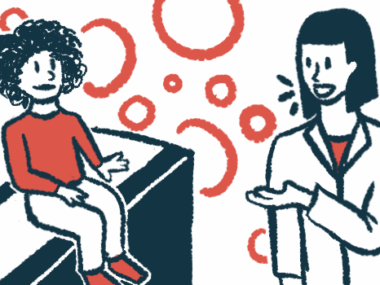My daughter’s PFIC reminds me why organ donation is important
Liver transplant is one of the primary treatment strategies for PFIC type 3
Written by |

This year, the U.K.’s National Health Service is marking the 30th anniversary of the establishment of its Organ Donor Register, which was founded to save lives and improve the quality of life of people with organ failure.
This is important to me and my family, because liver transplant is the only effective curative treatment option for progressive familial intrahepatic cholestasis type 3 (PFIC3), a disease that our 3-year-old daughter, Eva, was diagnosed with before her first birthday. (Ursodeoxycholic acid is a mainstay first-line therapy for PFIC, but it’s not effective for many patients.)
We hold out hope for the development of other treatment options, such as gene therapy, but it must happen before Eva deteriorates to end-stage liver disease, when the liver no longer functions.
A liver transplant involves utilizing an entire liver from someone who has died, or part of a living donor’s organ.
When people ask about Eva’s PFIC diagnosis, the two most common questions are: “When will she need a transplant?” and “Can she have part of a living donor’s liver?”
We really have no idea if or when she’ll need a transplant, although without new treatment options, one recent study showed the average age of transplant in PFIC3 patients was 8.5.
Living donation of part of a liver is more common in children than adults, but it’s a small proportion of the overall number of liver transplants — about three of every 100 here in the U.K.
Becoming an organ donor
When I was a teenager, my Girl Scout leader was a nurse that specialized in organ transplants. I often quizzed her about the ins and outs of the transplant process, trying to draw out grizzly stories and interesting facts. Inspired by her work, when I turned 18, I went to my local hospital and filled out the necessary forms to become an organ donor. At the time, you had to opt in to become an organ donor rather than opt out if you didn’t want to be, which is the case now in the U.K.
It might sound cheesy, but I’ve always thought that the gift of life is an amazing legacy to leave behind. After all, I won’t have much use for my organs once I’ve died.
No matter where you live in the world, if you want the chance to save a life — or multiple lives — speak to your family about your wishes. It takes only about two minutes to fill out online registration information in the U.K. and in the U.S. You can choose which organs and tissue you’d like to donate.
Note: Liver Disease News is strictly a news and information website about the disease. It does not provide medical advice, diagnosis, or treatment. This content is not intended to be a substitute for professional medical advice, diagnosis, or treatment. Always seek the advice of your physician or other qualified health provider with any questions you may have regarding a medical condition. Never disregard professional medical advice or delay in seeking it because of something you have read on this website. The opinions expressed in this column are not those of Liver Disease News or its parent company, Bionews, and are intended to spark discussion about issues pertaining to liver disease.








Leave a comment
Fill in the required fields to post. Your email address will not be published.